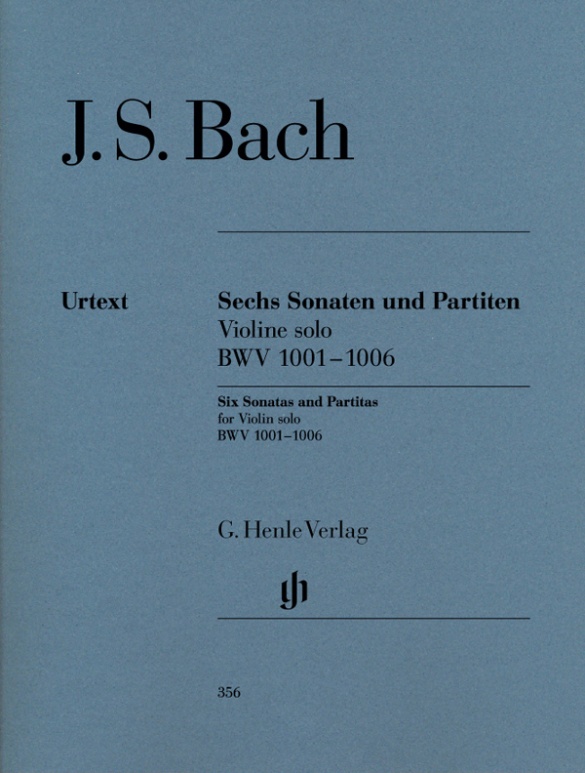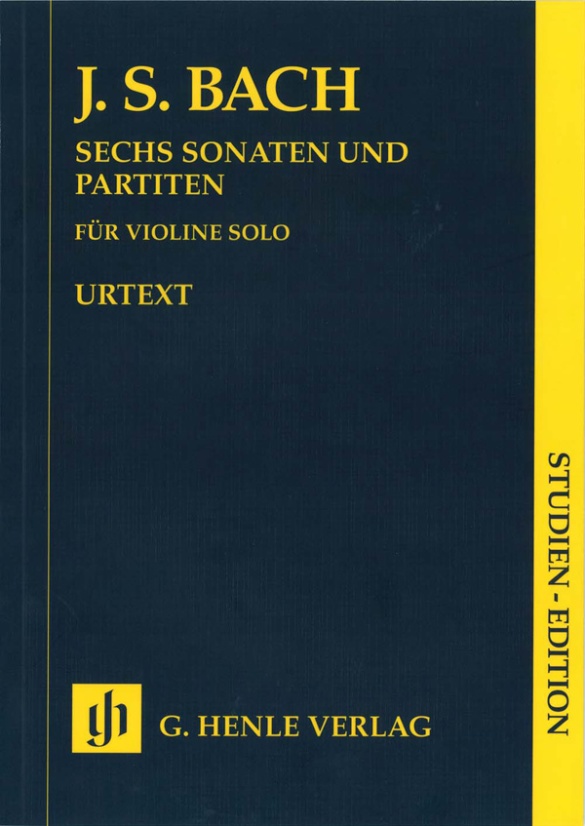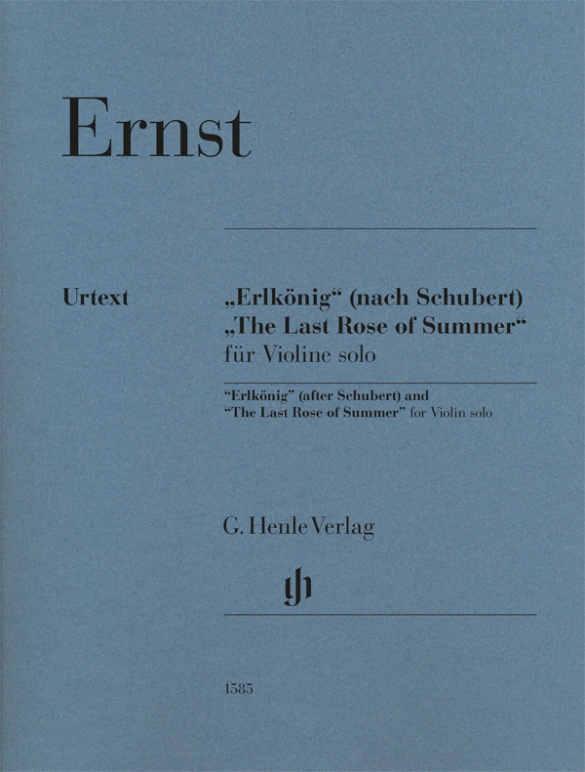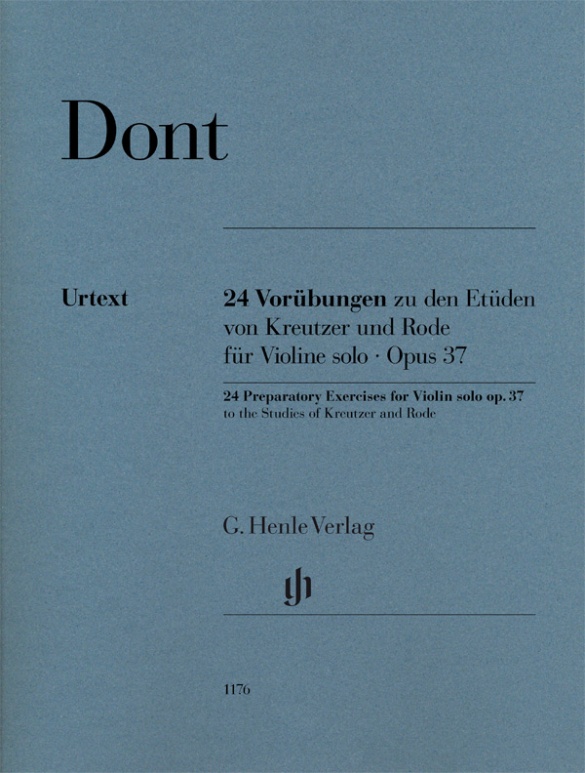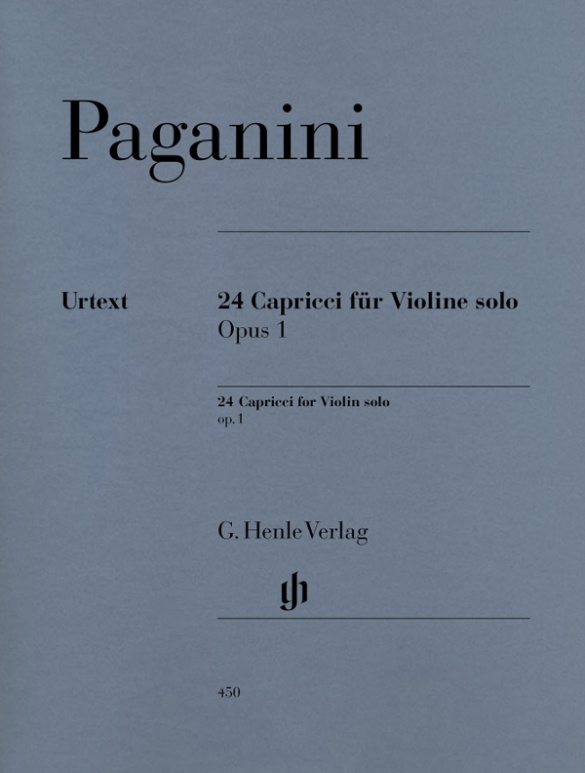

Nicolò Paganini
24 Capricci op. 1
In the era before Paganini, a brilliant solo cadenza in a sonata or concerto movement for violin was called a “capriccio”. Practice pieces for string instruments were also given this generic name. The merging of the concertante cadenza form with that of the technical etude was one of Nicolò Paganini’s greatest creative achievements. With his op. 1 Capriccios Paganini opened up a new musical dimension in the genre. They seem improvised, overflow with melodic abundance and are of a clear, spirited design. This Urtext edition is based entirely on Paganini’s autograph, since the first edition contains numerous errors and was probably not proofread by the composer. Renato de Barbieri’s performance instructions in our version evolved during many years of concert experience and an in-depth study of the autograph. With this and the informative preface, the violinist is offered an edition that the work has long deserved.
Content/Details
About the Composer
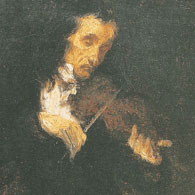
Nicolò Paganini
Violin virtuoso and composer of violin music of a unique and virtuosic character. He composed numerous works for violin and orchestra, pieces for solo violin, and chamber music for violin and guitar, as well as other chamber works. In pieces for the G string, like his Sonata Napoleone and Sonata Militare, he experiments with tone colors (harmonics and pizzicato for the left hand).
| 1782 | Born in Genoa on October 27, the son of a harbor worker and amateur musician. First musical education from his father, then from professional violinists. |
| from 1794 | Concerts in churches and for private audiences. Studies composition in Parma with Paer and Gasparo Ghiretti. He writes a great deal of music for guitar. |
| 1795 | Performance in Genoa of the Polish violinist Duranowski, who inspires Paganini. |
| 1801–09 | He lives in Lucca: there in 1805 he becomes first violinist of the city’s Cappella Nazionale. |
| before 1818 | Twenty-four Caprices, Op. 1 (published 1820), which inaugurate the genre of the concert etude. |
| 1805–09 | He composes 45 sonatas. |
| 1810–24 | First concert tour through Italy. |
| 1813–1815 | Guitar Quartets, Op. 4 and Op. 5 |
| 1816 | Violin Concerto No. 1 in E-flat major, Op. 6: conventional concerto–sonata form with very virtuosic passages for the solo instrument. |
| 1825–27 | Second concert tour of Italy. |
| 1826/28 | Violin Concertos No. 2 (B minor, Op. 7) and No. 3 in E major. |
| 1828–34 | Spectacular performances in European cities. |
| 1830 | Publication of a Paganini biography by Julius Schottky. Violin Concertos No. 4 (D minor) and No. 5 (A minor). |
| 1837 | The long-term establishment in Paris of a concert establishment, the Casino Paganini, fails. |
| 1840 | Death in Nice on May 27. |
About the Authors
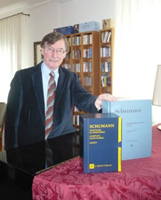
Ernst Herttrich (Editor)
Dr. Ernst Herttrich, born in 1942 in Würzburg, read musicology, history, German and theology at the universities in Würzburg and Cologne. In 1970 he earned his doctorate in Würzburg with a study of the expression of melancholy in the music of Mozart.
From 1970 to 1990 he was an editor at G. Henle Publishers in Munich, after which he was Head of the Beethoven Complete Edition for over 15 years. In 1999 he took over as Head of the Beethoven-Haus Publishers, and from 2001 was made Head of the Beethoven-Archiv, the research centre at the Beethoven-Haus.
He has been a visiting professor at Meiji Gakuin University in Tokyo and has undertaken several lecture tours both there and to Kyoto. His research interests include source studies, editorial techniques and music history. Herttrich’s publications include “Beethoven. Liederkreis an die ferne Geliebte” (Bonn 1999) and “Ludwig van Beethoven. Biographie in Bildern” (Bonn, 2000). Herttrich has edited over 100 Urtext editions for G. Henle Publishers.
Product Safety Informations (GPSR)

G. Henle Verlag
Here you can find the information about the manufacturer of the product.G. Henle Verlag e.K.
Forstenrieder Allee 122
81476 München
Germany
info@henle.de
www.henle.com
Die vorliegende Ausgabe fußt auf dem Autograph und korrigiert die vielen, die ursprüngliche Intention Paganinis verzerrenden Fehler.
ESTA Nachrichten, 2014推荐
autogenerated_cross_selling
本书目其他版本


